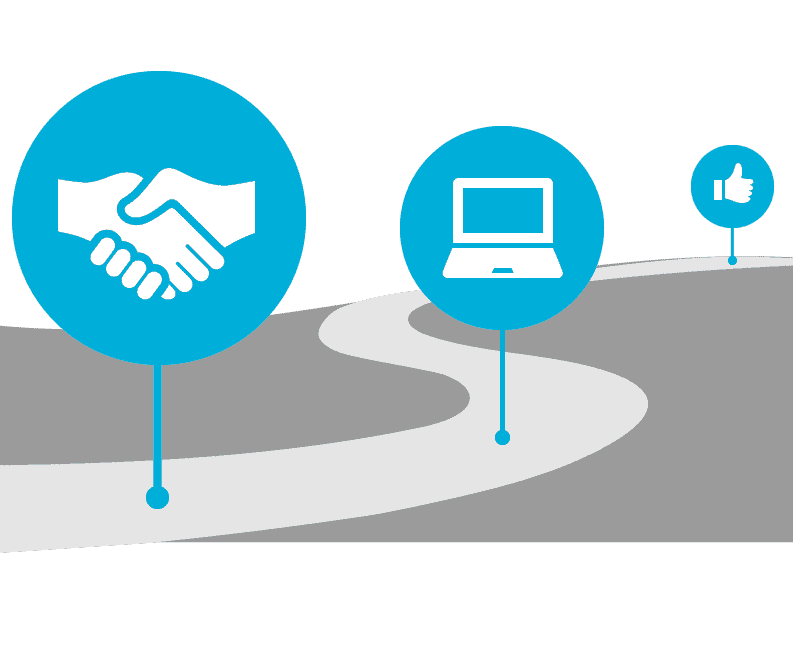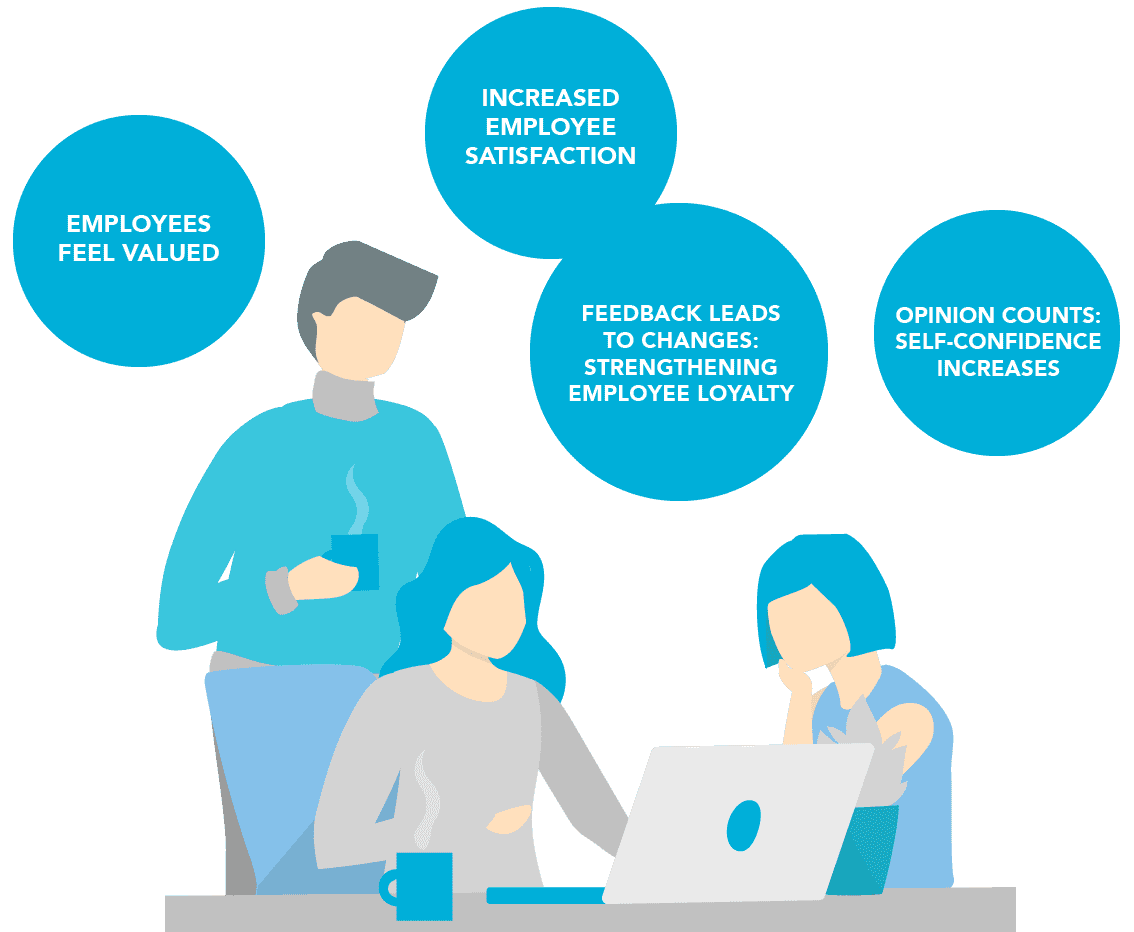Use Insights to retain talent
Do you conduct an employee survey once a year? Do you lose talents? How systematic feedback helps you retain talent.
Employees want to make a difference
A recent interview with an employee at a global manufacturer of abrasive products shed some light on this: “If we had been involved in the company’s development process, and I’m just talking about the ERP system and logistics processes here, I’m sure we could have saved CHF 6 million over the past three months. It is really frustrating and makes no sense that our knowledge and opinions are not being sought.”
When employees feel that they are making difference at work, they feel important, they are more enthusiastic, and they feel a greater connection to the business.
The employee in question has handed in their resignation and is looking for a new job. The resignation will cost the company around the same as an annual salary until the replacement employee is able to contribute anywhere near as effectively to the company as their predecessor.
Expectations and needs have evolved
These days, employees are no longer willing to work in companies where they are unable to express their opinions or make a contribution. The employee in the example above is a millennial. They are not satisfied with just following orders and doing their job. The strength of an employee’s loyalty to a company is determined by, among other things, the degree of personal development they experience and extent to which their opinions are integrated into the business.
Talents have a choice of where and how to work. The best talent is looking for greater control and ownership over the seamless integration of work and life.
The Kelly Global Workforce Index is an annual survey of employee opinions that reveals how employee needs, expectations, and interests are constantly evolving (Change of Mindset). They change with the varying phases of employees’ lives and careers.
Businesses need to find solutions that meet differing employee needs, based on age, gender, and background, if they are to harness the expertise and skills of their employees. It is becoming increasingly important for organizations to be innovative in their talent management programs in order to attract and retain top talent. Yet talent also comes with a comprehensive and dynamic list of needs, and can have high expectations of companies.
To meet talent expectations, it is crucial for companies to understand their employees’ needs. Just as it is imperative to capture the voice of the customer, companies should also consistently capture the voice of the employee, so that they can leverage their talent to develop the organization. Companies should therefore invest in digital solutions to systematically capture the voice of the employee, and incorporate it into its business development.
Continuous feedback throughout the employee journey
Annual employee surveys have very little value any more when it comes to gathering up-to-date opinions, perceptions, and attitudes and responding to trends in an agile way.
In order to respond proactively to changing needs throughout the career cycle of their employees, managers need up-to-date data gathered through continuous surveys throughout the employee journey.
Companies do this by creating an employee journey, similar to the concept of a customer journey. Beginning with the recruitment process, and continuing on into the interview process, onboarding program, workplace environment, teamwork, etc. and through to employee offboarding.
Every relevant event on the employee journey should trigger questions to the employee. These questions should focus on issues such as motivation, satisfaction, loyalty and engagement, which are systematically checked throughout the various phases of the employee journey. Employee feedback helps identify potential for development within the organization
By applying continuous feedback throughout the employee journey, companies ensure that current and relevant data provides insights for potential development.
Top talent strengthens competitiveness
The findings from continuous surveys support leaders in their day-to-day management of the business and show employees that their opinions and welfare are of interest to the company. Employee satisfaction increases. When employees see that their feedback leads to improvements, employee loyalty also increases.
Continuous Feedback help companies to benefit in many ways:
- Employee needs are recognized at every stage in the career cycle. When adjustments are made, they are targeted to meet employee needs. The company exceeds employee expectations. Employee satisfaction increases.
- Employees take their positive experiences of their company out into the world with them, and attract more talent.
- Employees know that their opinions count. They see improvements that they have been involved in initiating and identify themselves with them. Employee loyalty increases.
- Satisfied employees and greater loyalty to the company reduce staff turnover. The company makes cost savings.
- Continuous feedback improves the management culture.
It is a fact that employee needs are constantly evolving. Companies would do well to be just as agile in developing themselves, in order to attract and retain top talent. Powerful insights software, which integrates data collection and the gathering of insights into the daily routine of leaders and employees, helps companies achieve this.

